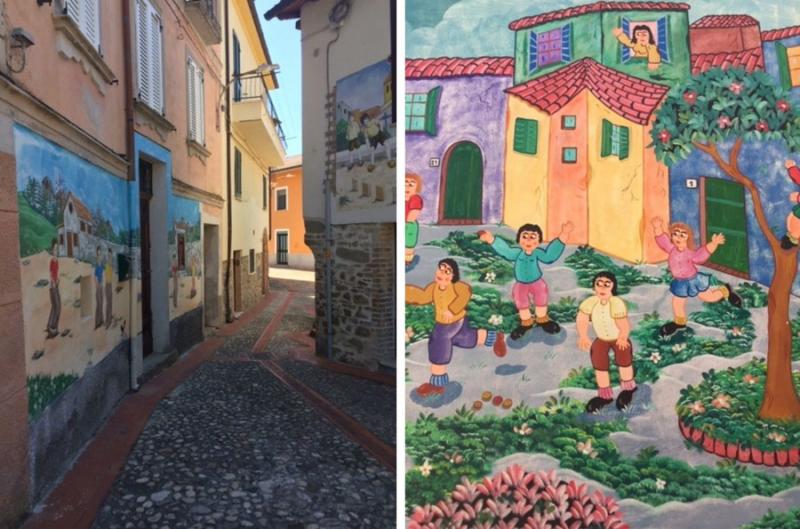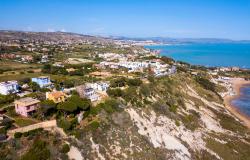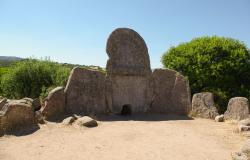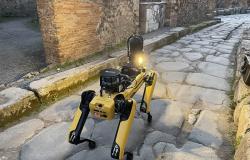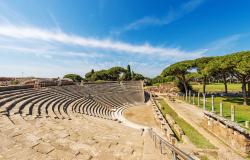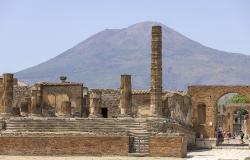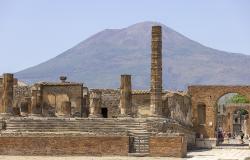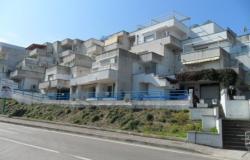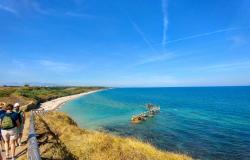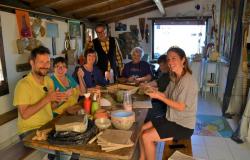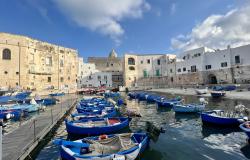Lately, Abruzzo has been getting a lot of attention from those seeking off-the-beaten-path Italian destinations. Apart from its natural beauty and uncrowded medieval villages, the region also has an impressive list of cultural heritage sites that attract curious minds and art lovers. Here is my pick of some fascinating sites, which have withstood sieges, wars, earthquakes, and neglect over the centuries and will give you a glimpse of Abruzzo’s rich history and culture.
Capestrano Warrior in Chieti

The modern-day territory of Abruzzo used to be home to many Italic tribes, Vestini people among them. The first mention of Vestini dates back to the 4th century BC when they joined the fight against the Roman rule. Numerous artifacts from the burial grounds — which were typical for the ancient Vestini tribe — are shown in The National Archaeological Museum of Abruzzo - Villa Frigerj in Chieti: fragments of funerary statues, weapons, buckles, ice crampons, and bronze tableware. But the largest and most impressive find on display is the famous funerary statue of the Warrior of Capestrano, which has become a symbol of Abruzzo. Carved from a single stone block, the Warrior is over two metres (6.5 feet) high with 135cm (4.5 feet) wide shoulders. In some places, you can clearly see marks left by the sculptor’s tools. Red pigment is still visible in some parts, which lead archaeologists to believe that the sculpture was originally painted.
On one of the columns that support the warrior’s figure is an inscription. It is in a paleo-Sabellic language and the writing is not clear, which leaves room for interpretations. A few years ago, an article in National Geographic suggested that the Warrior could be the legendary Numa Pompilio, the second king of Rome. Some, with untamed imagination, tried to explain the inscription using Kabbalah as proof that the Warrior might have come from space. The jury is still out but for the moment, the most widely accepted version is that the inscription attributes the statue to an artisan called Aninis who made it for a prominent member of the community, possibly a king, called Nevio Pompuledio.
Corfinium, the first capital of Italy

The unassuming small town of Corfinio sprawls in the middle of the Peligna Valley surrounded by majestic mountains. Very few know that this is where Corfinium, the first capital of Italy, once stood. In 91BC, Corfinium became the capital of the Italic Federation during the Social War against Rome and here, for the first time ever, the name “Italia” was used on freshly minted coins to demonstrate the thirst for independence and political ambitions of the peoples united under one strong identity.
In the year 1BCE, Corfinium — the city of the Paeligni tribe — was a thriving metropolis with a population of 19,000 people. In a small Archaeological Park, just outside the modern-day Corfinio, you can admire the remains of a city quarter: ancient mosaics inside a dwelling with a garden and fountain, streets, shops and a thermal system. Recent archaeological digs under the town’s San Pelino Cathedral revealed workshops and the area (campus) where the troops of Julius Caesar were stationed during the siege of Corfinium. In the town’s small archaeological museum (Museo Civico Antonio De Nino) you can see a rare coin with “Italia” written on it.
Like this article? Don't miss "Exploring the Land of Saints and Warriors in the Heart of Abruzzo"
Hermitages of Celestines monks

Hidden in a dense forest, just a short drive from the village of Roccamorice, sits the 11th-century hermitage where Pietro da Morrone, the future Pope Celestino V, lived for a while. For many years, he moved from one isolated mountain location in the Majella area to another, living in caverns and following strict ascetic practices, devoted to penance and prayer. He formed a small order, a branch of the Benedictines, later named the Celestines. In 1294, the cardinals’ assembly decided to make the hermit a pope. After only five months, citing his old age and desire to go back to the pure ascetic life of a hermit, Celestino V quit.
Leaning on a craggy rock, the hermitage of Santo Spirito consists of several levels reached via vertiginous steps carved in stone. The chapel, sacristy, hermits’ cells, and other spaces date to different historic periods. It can be reached by car and there are picnic tables on the front lawn, so even if the hermitage is closed you can admire it from outside and enjoy the peaceful surroundings.
Within a short distance, there is another humble abode where Celestine monks lived in the Middle Ages: Eremo of San Bartolomeo in Legio. The first hermits settled here as far back as the 6th century. Chiselled in the rock, the ancient refuge is split into several small rooms with fading 13th-century frescoes above the entrance. The steep steps at the entrance, called Scala Santa, were climbed by pilgrims on their knees. As you enter the hermitage, in the wall on the left is a small carved basin with holy water, l’acqua Santa di San Bartolomeo. Every year, on August 25, the villagers gather in the hermitage for liturgy and carry the statue of San Bartolomeo to the main church of Roccamorice for the patron saint’s feast celebrations.
Oratorio di San Pellegrino in Bominaco

Tucked away in a small valley, shielded by a green mountain from oblivious passersby, the tiny village of Bominaco is home to 54 people and a hidden treasure: Oratorio di San Pellegrino. The oratory and the church above it is all that remains from what once was one of the most prosperous abbeys of the Benedictine order in the Middle Ages.
Often called “Abruzzo’s Sistine Chapel,” the oratory is a true gem of medieval art. The plain, almost crude exterior does not prepare you for the splendour you see inside. The entire chapel, from the floor to the ceiling, is covered with magnificent 13th-century frescoes depicting the Childhood of Christ, the Passion, the Final Judgment, and the life of Saint Pellegrino. In the presbytery part of the chapel, on two opposite walls, you will see a rare liturgical calendar, showing agricultural activities, saints’ days and lunar phases for each month.
Murals of Azzinano di Tossicia
Set against the dramatic backdrop of the Gran Sasso mountain range, the hamlet of Azzinano di Tossicia, in the Teramo Province, is home to an open-air art gallery. Most houses here are decorated with more than 60 colourful murals by some of the best Italian naïf artists depicting street games that local kids used to play once upon a time.
The hamlet is the birthplace of Annunziata Scipione, one of the most celebrated Italian naïf artists, who inspired the idea of an open-air gallery in 2001. Often called a “peasant artist”, she secretly taught herself to paint at the age of 44 and continues working well into her 90s.
Azzinano is home to fewer than 100 people. The old part of the hamlet is abandoned today, as the buildings were damaged by the earthquakes in 2009 and 2016, so you are most likely to have this magnificent open-air art gallery all to yourself. New murals are added every few years to the hamlet’s collection during an annual festival “I Muri Raccontano” that takes place in the summer.
